At the Fray


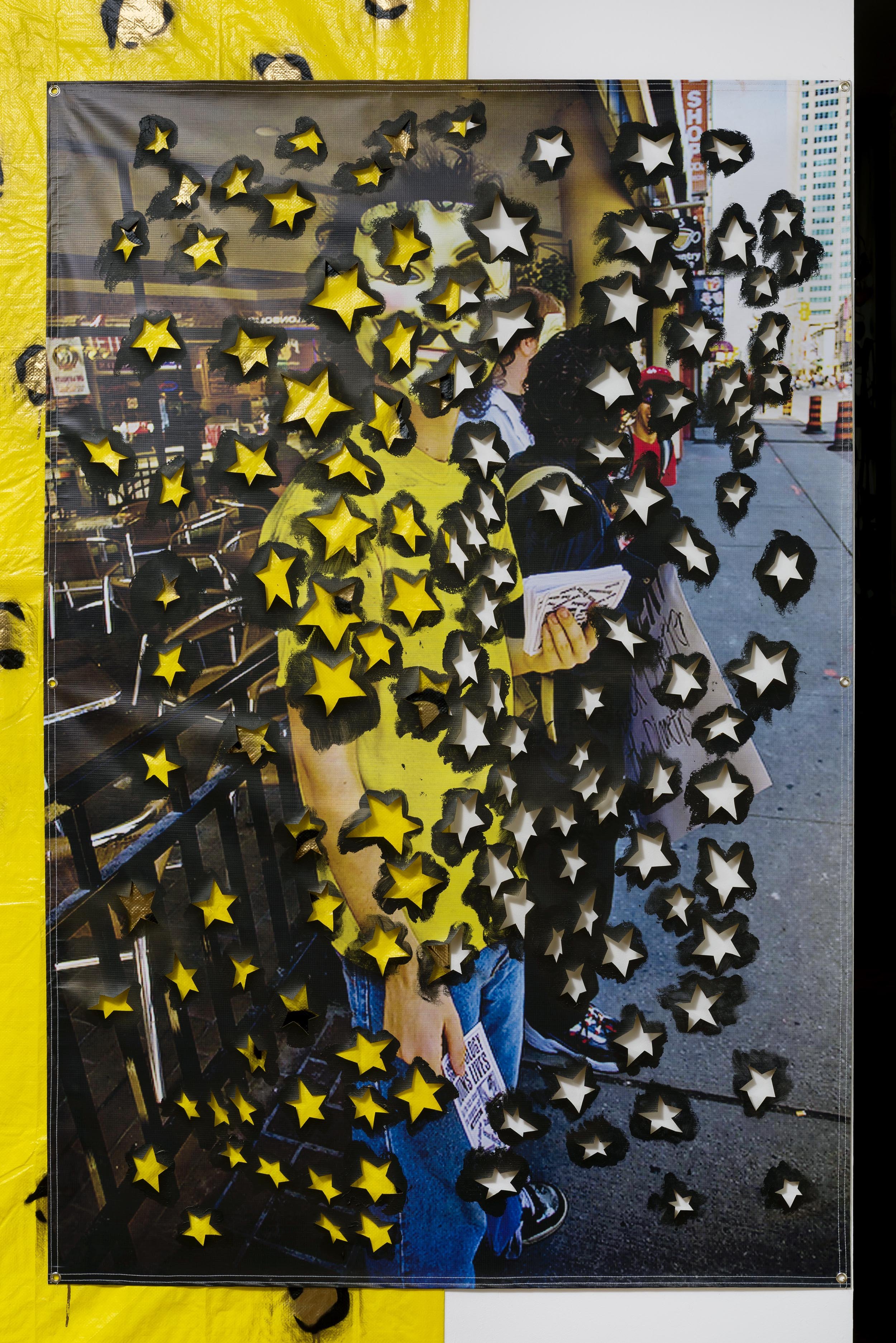

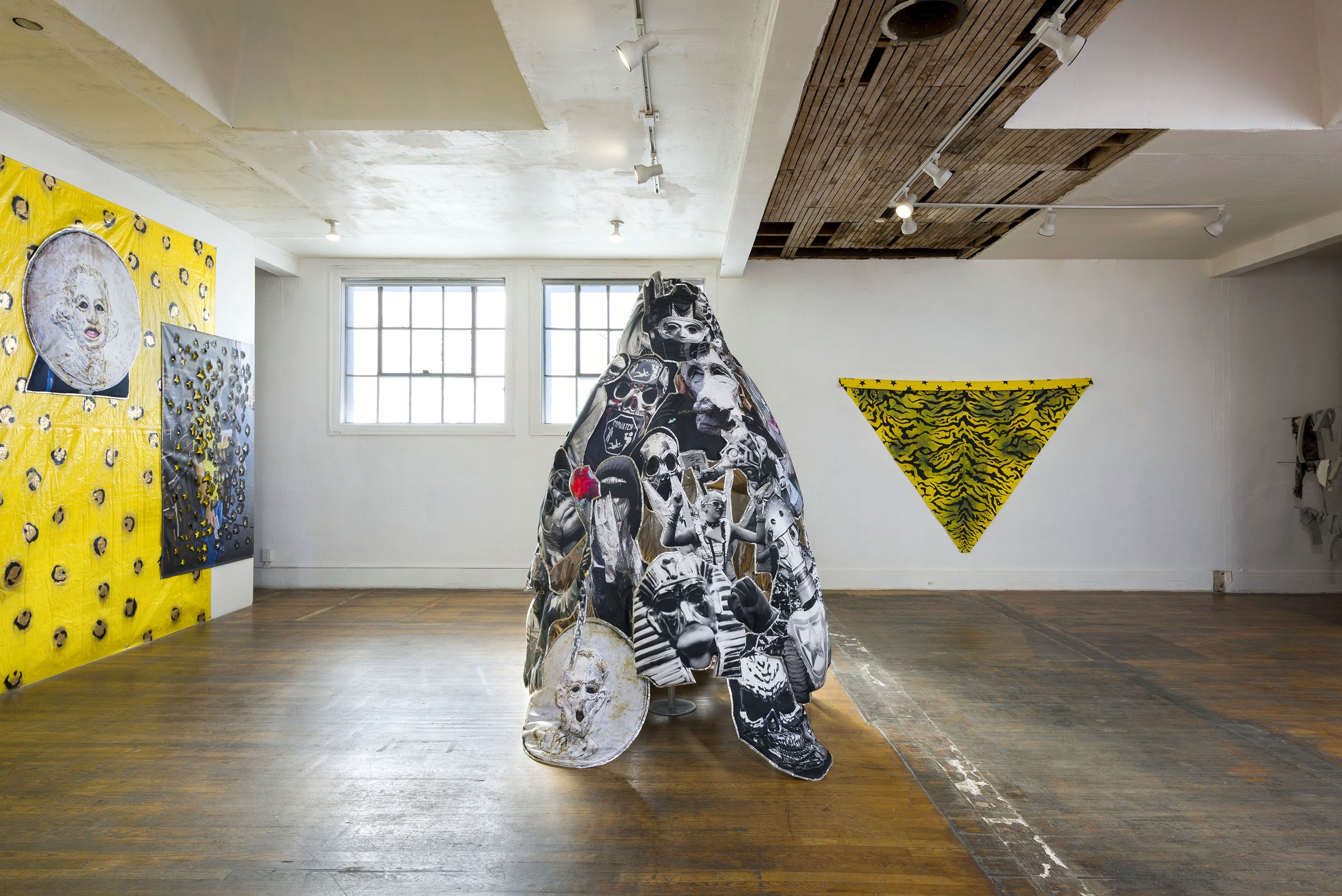
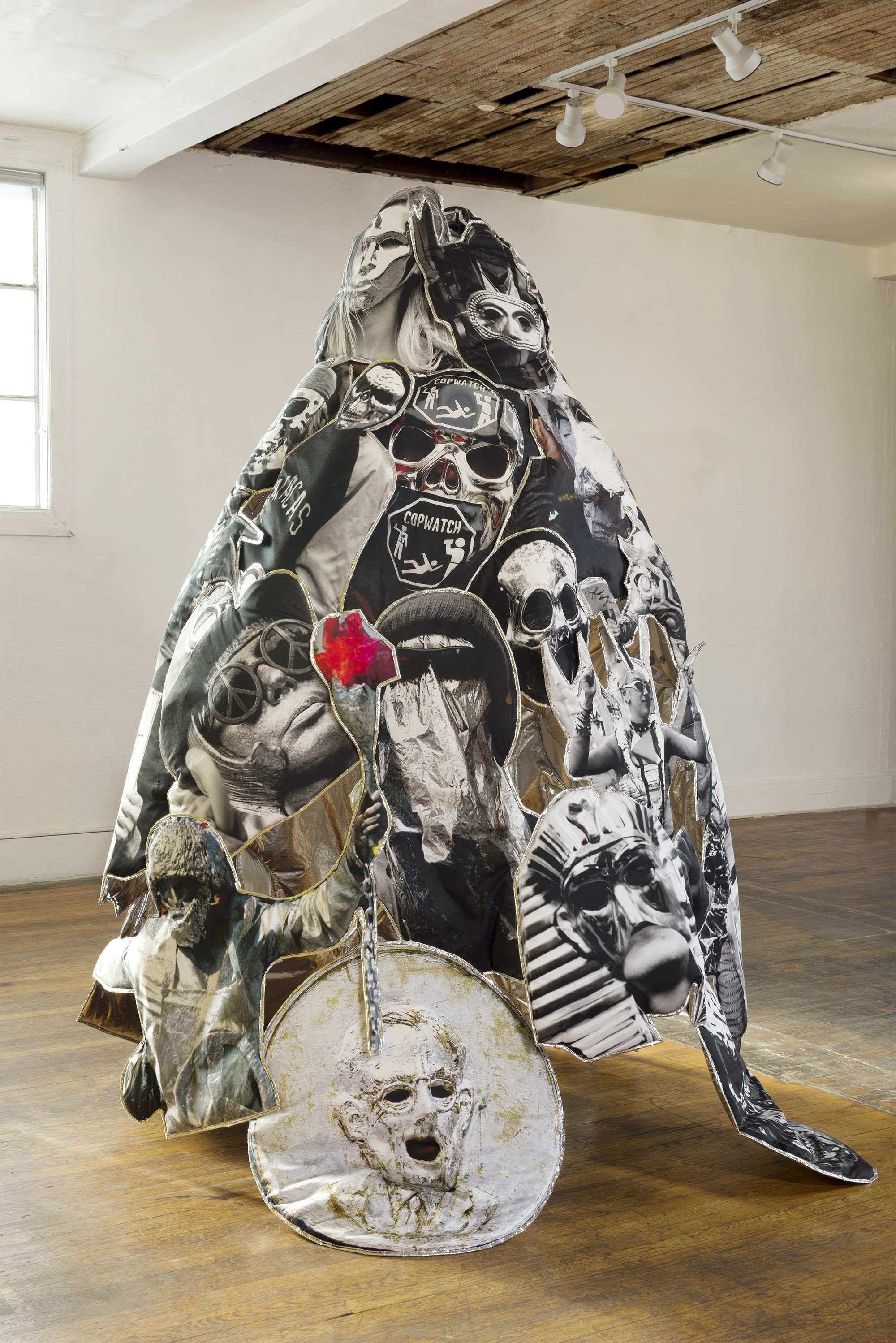



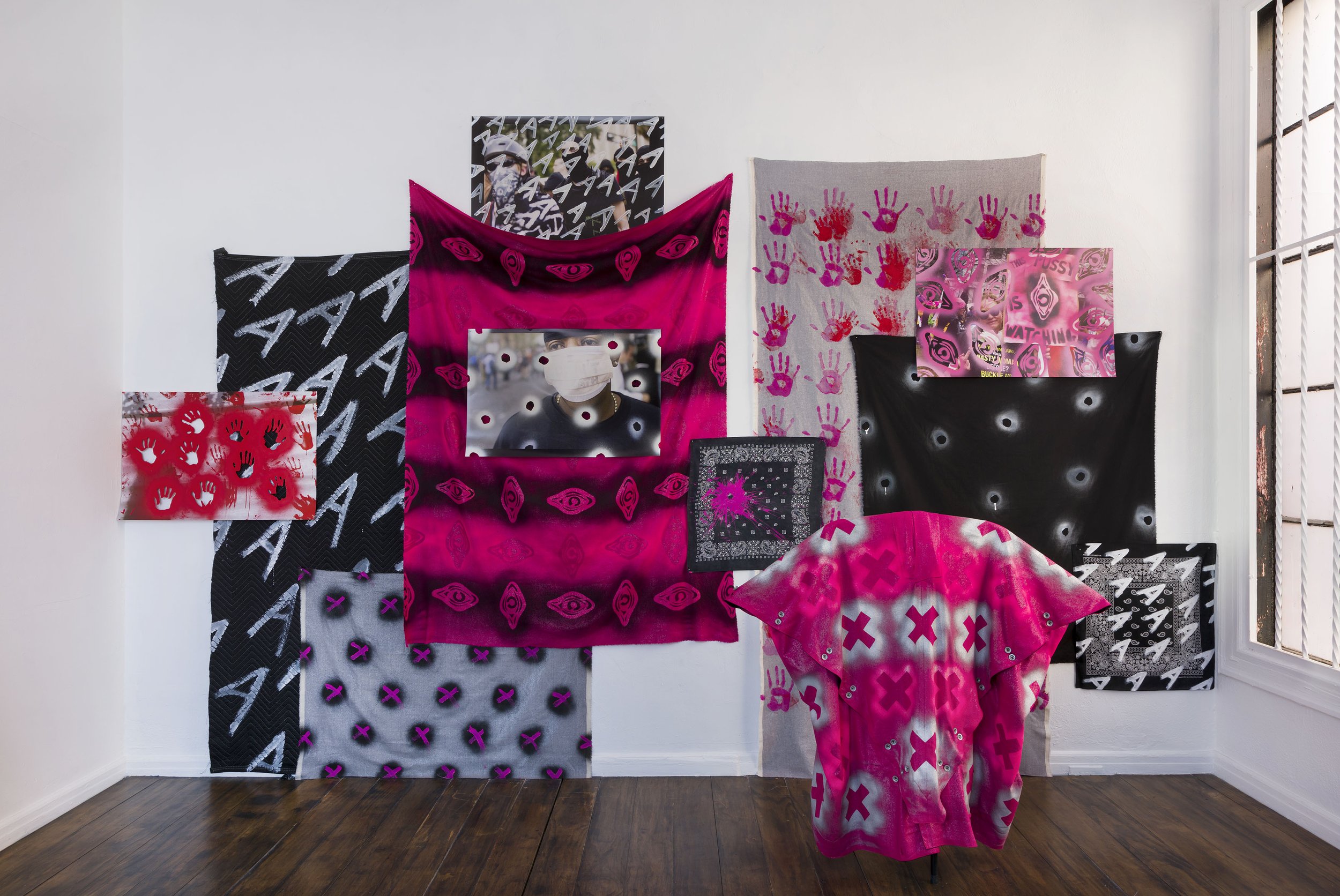

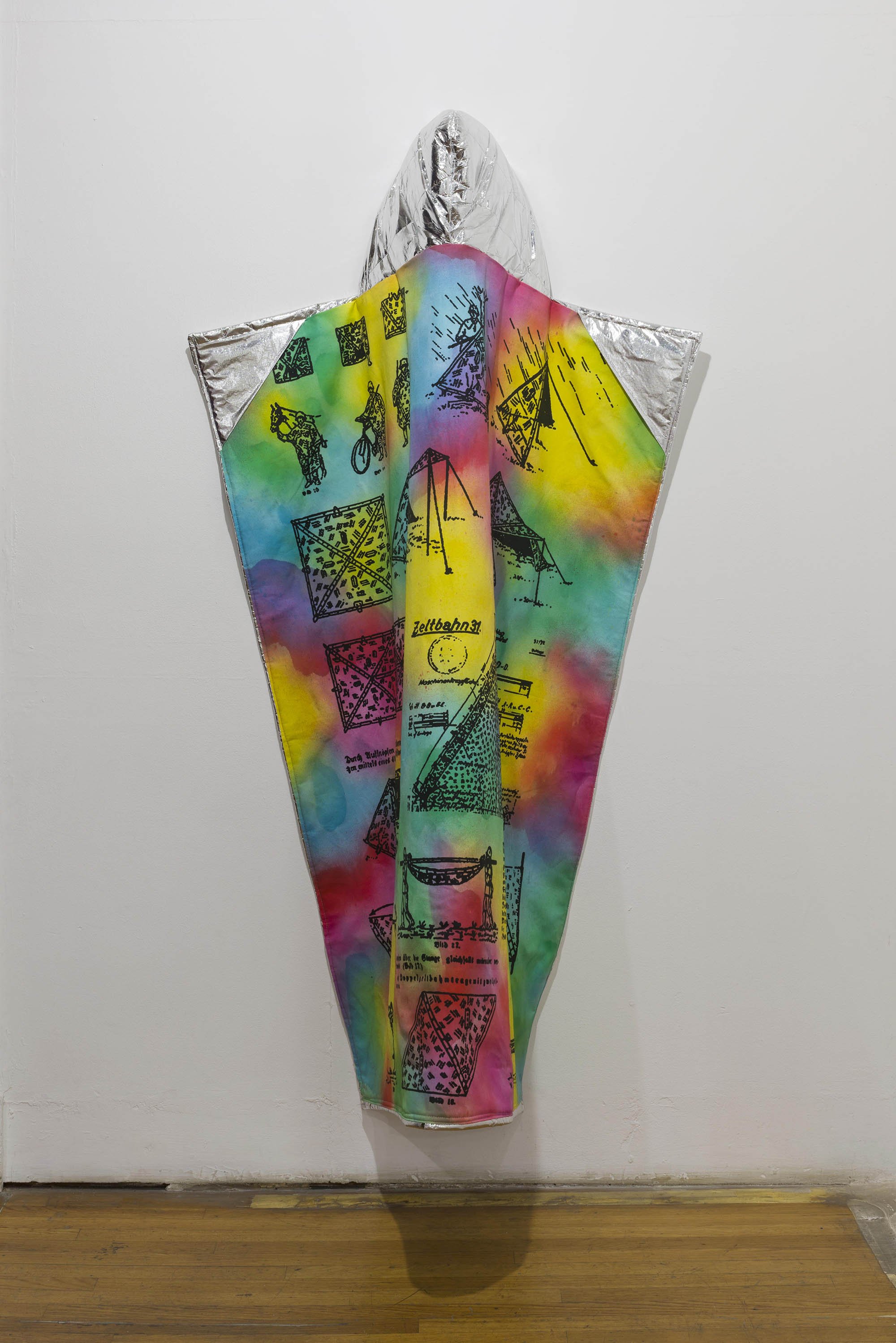
How can woven fabric and pattern be used as modes of counterpower for marginalized groups in conflict zones? Specific yet somewhat abstract, this question anchors Wyman's new paintings, sculpture, and photographs, as she continues to investigate the transformative and protective potentials of textiles—homing in on uses of pattern, clothing, and masking within a lexicon of visual resistance.
For At the Fray, Wyman develops a civilian psychological neo-camouflage for future conflicts, steeped in motifs and images selected from her ongoing MAS-archive of clothing and costuming of masked protesters from around the world. Anthropologist Michael Taussig has noted that “the field of aesthetics has paid scant attention to its affinity with the animal and with war, just as it fought shy of magic and conjuring.” Taking up these deeper stakes, Wyman focuses on DIY painterly effects applied by street protesters to buildings, banners, signs, clothing, and masks—a multifaceted social text inscribed at the intersection of ad hoc deployment and a peculiarly talismanic imagery meant to ward off evil.
Combining adaptable military-style preparedness with protesters' apotropaic symbols, Wyman has painted over multi- buttoned triangular pieces of fabric, known as Zeltbahns, to create a series of double-sided recombinant paintings. A Zeltbahn is the German name for a shelter-half. Shelter-halves were used by Italian, Russian, Australian, UK, and US militaries. Designed and used from the 1890s, they became the first mass-distributed camouflage textile. Reconfigurable with buttons, they can serve as poncho, tent, floatation device, stretcher, sling, and more. These triangular pieces of fabric became a kind of testing ground for military camouflage graphics with over 20 designs applied to them by 1945. Four of these double-sided Zeltbahn paintings accompany three large-scale textile works: a monument built from quilted panels of silver material bearing photos of chrome-masked protesters, and two spatial installation featuring patterned swatches of protest symbols, spray- painted using stencils cut from photographs. These transformative textiles and recombinant forms aim for social camouflage, offering a manifold cloak for the resistant body—a provisional, repurposable collective space in highly volatile times.
At the Fray is funded by a New Work Grant from the Australia Council for the Arts.